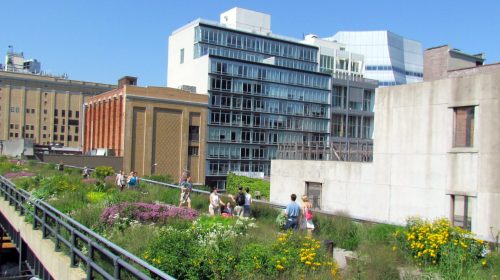Cities are a major source of fossil fuel emissions and, consequently, greenhouse gases (GHG) such as carbon dioxide. Understanding the location and timing of GHG emissions across a city can help policy makers reduce emissions and develop mitigation efforts. Studying emissions in cities is a complex affair, however, because emission sources vary significantly throughout the day and across the city itself due to traffic patterns, industry demand, and seasonal heating/cooling needs. Current GHG emission inventories — the what, where, and when of emissions — use a large mix of data to model and estimate city emissions. The inventories are not perfect, however, and there is still some mismatch between observed emissions and modeled estimates.
Researchers from the University of Utah and Northern Arizona University, funded in part by CPO’s Atmospheric Chemistry, Carbon Cycle, & Climate (AC4) program, are now testing an innovative approach to collecting the measurements needed to improve emissions estimates. The research team mounted a high-precision GHG instrument on the roof of a public light rail train car to semi-continuously capture emissions as the train traversed across the Salt Lake Valley region. They then used their collected data to guide adjustments to an urban emission model of anthropogenic emissions across Salt Lake Valley during autumn 2015 and compared the improvements in the model with those from the same model adjusted using conventional, non-mobile ground measurements of emissions from GHG monitoring networks. Their results, published in Environment, Science & Technology, show that incorporating mobile measurements into the modeling framework led to more accurate and more useful emission estimates.
Prior to incorporating the team’s light rail data, the emissions model would underestimate afternoon carbon dioxide emissions. Incorporating measurements from the light rail runs eliminated over half of this underestimation. The light rail measurements also revealed the geographic diversity in emission types and sources. For example, emissions in the northwestern part of the region were largely from electricity generation while emissions in the southern part of the valley came more from industrial sectors. This sort of spatial information is especially useful for identifying city sectors with emission discrepancies. Compared with non-mobile measurements from GHG monitoring networks, the mobile measurements were more useful than any single monitoring station and provided valuable spatially-informative details. Further, staging multiple non-mobile monitoring instruments is extremely costly compared with purchasing just one instrument that can then travel around. This promising mobile method to monitor urban emissions is still in development, as the approach needs to be studied in other cities with different public transit systems and structures.
For more on the project and associated researchers, please see this press release from the University of Utah.










